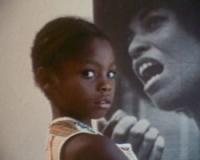Charles Burnett’s opening visuals in two of his student films, Several Friends and Killer of Sheep, are immediately captivating, but the lava-like speed of most of the scenes, the avoidance of following any story line that might actually lead to escalating conflict, and the absence of a summarized ending allows some viewers to emotionally disconnect from the story long before either movie ends. Burnett’s visual style however, is stunning. Where his interest in energetic, conflict-based story telling wanes, his clear passion for creating emotion with cinematic motifs is almost masterful. He creates visual allusions characterized by close physical proximity yet gaping emotional distances, and he pays careful attention to artistic balance and lines. He isn’t afraid to put his characters together in a room and let them suffer in their silence.

Both films use a combination of surrealism and neorealist techniques to once again remind the viewer that life is strange, both compelling and repelling at once. One scene in particular stands out then and now as possessing an absurdly surreal quality, emerging amidst the decidedly bleak slice of life Charles Burnett presents us with. The entire film is dense with beautifully framed shots and imagery, but one can’t help but be struck by the quiet scene in which Stan’s daughter trespasses upon her father’s conversation in the kitchen, her face encapsulated by a dog mask. The mask itself is grotesque in a comic way, with the distended and terminally depressive features of a hound dog, made even more absurd by the young girls fist hidden from view in the dog’s mouth. In the kitchen, she stands in the corner, a complacent witness to her father’s labor on the kitchen floor, listening in on a frank conversation about suicide between Stan, her father, and a colleague of his. If the little girl had been troubled by such a conversation, the audience has know way of knowing, for her features are hidden from view and she does not move from her spot. What might have been a light moment is deadened by the dark conversation in juxtaposition with the grotesquely caricatured dog mask. When her brother comes in, roughly grabbing her face in the mask, this quiet moment is ruptured by the sounds of her muffled cries. Her father rises from his position on the kitchen floor to come to her aid, and in turn scares away her older brother and the threat to her innocence.
Three themes seem at play here, with the young girl representative of childhood innocence, her brother occupying that liminal space between the innocence of youth and the moral and spiritual decline of age, and her father operating within the position of one without hope or allusion for a better life. The mask, placed within this thematic context, metaphorically and physically positions itself as a barrier for the little girl, who is still, in her innocence, able to separate herself from the stark realities of life. This mask, or shield of innocence is physically threatened by her brother, who seeks to propel her into the same liminal space in which he exists, but is protected by her father who finds strength in his daughter’s youthful naiveté. But her mask is further complicated by its grotesquely comical nature thinly veiling and simultaneously reflecting the absurd ugliness of life. Children are a strong presence throughout Burnett’s work and he uses them to show life through the eyes of the least powerful captives in his world, mimicking what they see, responding by instinct to what they feel. This scene’s themes stretch throughout the entirety of the film, but aren’t so strongly visually and absurdly represented as in the quiet scene in the kitchen in which talk of suicide, the preservation of youth, and the moral dissolve of young adulthood come head to head only to momentarily stave off the impending realities of life.
—Rachel Wilson and Dawn Spinella






 Mobile Navigation
Mobile Navigation

